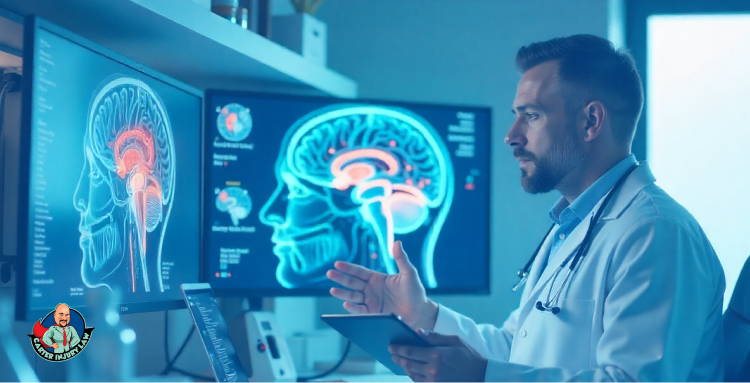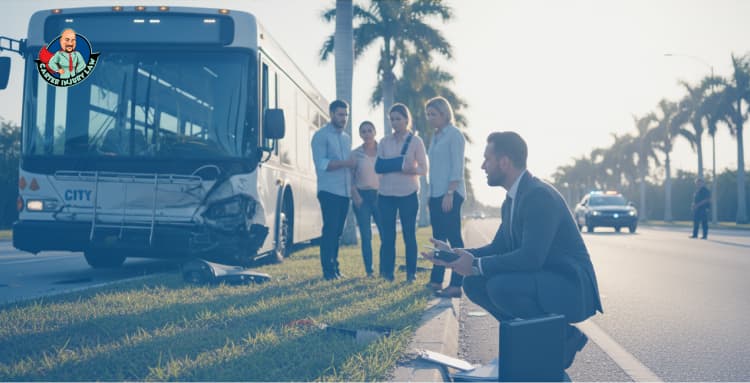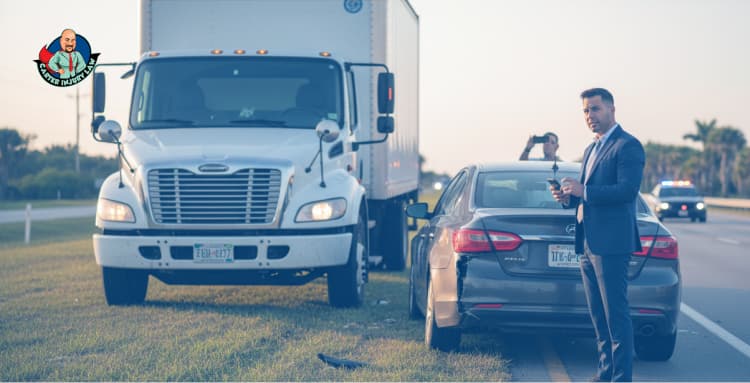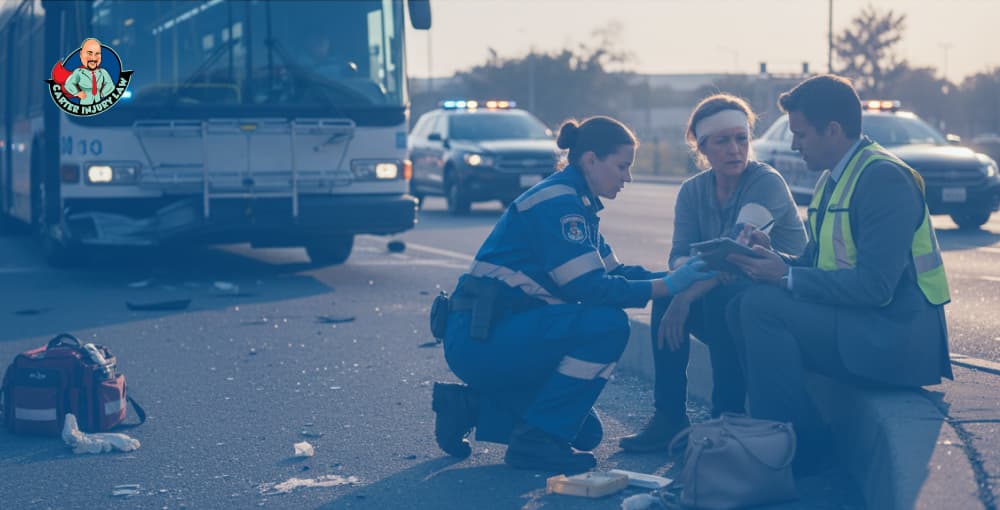Sometimes, the real disruption after a car accident isn’t the crash itself. It’s what comes next. The confusion. The quiet pain that creeps in days later. The endless second-guessing about Do I really need to see a doctor? What kind of treatment should I even get? And if I don’t go right away, will it hurt my case?
The truth is, you’re not just trying to heal your body. You’re also dealing with a system that seems more interested in paperwork than people.
And the decisions you make early on can influence everything from how you recover to how seriously the insurance company treats your injuries.
So, where do you even begin?
1) Emergency? Start with Immediate Care First
The very first thing after an accident is figuring out if you need emergency care. If you’re feeling like something is really wrong, or if there’s any doubt at all, don’t hesitate to call 911 or get yourself to the emergency room.
You wouldn’t want to second-guess that because waiting can make things worse. In fact, studies show about 4.4 million people head to the hospital after car accidents every year, and nearly two-thirds of those who put off emergency care end up with symptoms that get worse (Injury Facts).
That immediate step sets the tone for everything else, because how you start your medical care can affect the rest of your treatment. But what if it’s not urgent enough for the ER? The next decision is whether to go to urgent care or see your primary doctor. Let’s talk about how to figure that out.
2) ER, Urgent Care, or Nothing at All? Making the First Medical Choice
So let’s say you didn’t go by ambulance. You felt okay enough to stay at the scene, maybe even drive yourself home. That doesn’t mean you’re in the clear. It just means the clock is ticking, and the next move matters.
At this point, a lot of people hesitate. Do you go to the emergency room? Walk into an urgent care? Wait and see if the pain gets worse?
Here’s how to think about it. If you have severe symptoms such as dizziness, sharp pain, or anything else that makes you pause, go to the emergency room. They’ll run tests, rule out anything serious, and document it right away. That documentation becomes part of your case, whether you decide to pursue one or not.
Urgent care is a more flexible option if your pain feels manageable but still needs attention. They’re used to seeing car crash patients and can treat minor to moderate injuries. Plus, they can refer you out if you need imaging or a specialist.
Primary care physicians seem like a natural next step, but in Florida, that gets tricky. Many of them don’t handle auto accident injuries. Because billing auto insurance is a hassle, and it’s not part of their usual flow. What usually happens is they’ll refer you out to a clinic they trust, or sometimes to one that just wants your business. Either way, it’s worth checking the provider’s background before walking through that door.
3) Your Claim Depends on Medical Bills and Insurance Valuation

What kind of care you get after a car accident also shapes how your injury claim is valued. Insurance companies look at more than just whether you were treated; they also consider where you went, when you started, and what providers were involved. The more legitimate and consistent your treatment, the more seriously your injuries are taken.
This is where it helps to be cautious. Some clinics operate like assembly lines. They're often called “PIP mills” that churn through car accident cases to bill insurance fast. You might get referred to one without realizing it, especially if your primary care office doesn’t treat accident injuries and sends you elsewhere. And while not every referral is a red flag, it’s smart to do your homework.
Look up the clinic. Read the reviews. Know who your doctor will be before you walk in. Because the quality of care you receive could also be the difference between a claim that’s respected and one that’s dismissed as inflated or questionable. Here’s a short video from Attorney David Carter explaining what kind of medical treatment you might need after a car accident.
Once you’ve found a provider you trust and you’ve begun treatment, the focus shifts to how you’re treated, and in most cases, that starts with the most conservative approach.
4) Conservative PT and Chiropractic Therapy Care Comes First
Once the initial evaluations are done, most people begin with the least invasive option available. That usually means physical therapy or chiropractic treatment. And there’s a reason these are the go-to starting points. They focus on restoring function without introducing anything too aggressive.
Physical therapy rebuilds what the injury took away. You’ll work on strength, flexibility, and stability. It’s especially useful if you’re dealing with soft tissue injuries, whiplash, or reduced range of motion. In fact, early physical therapy can improve symptoms in up to 60% of whiplash patients (National Library of Medicine).
Chiropractic care, on the other hand, centers around alignment. After a car crash, it’s common for the spine or joints to shift slightly out of place, creating pressure and discomfort. A chiropractor’s job is to adjust those misalignments and help your body recalibrate itself. For many people, it brings real relief.
Neither of these treatments involves surgery, needles, or long recovery times, which makes them ideal early steps. And if your pain persists despite this conservative care, that’s when doctors typically take the step of finding out what’s going on beneath the surface.
5) Diagnostic Imaging: What’s Really Going On Inside?
Once conservative care starts, your medical team will probably want a closer look at what’s actually happening beneath the surface. MRIs, X-rays, and CT scans are not only useful tools for doctors, but they are also essential in the eyes of insurance companies.
Because symptoms like pain or stiffness are subjective. Imaging gives you objective evidence. It shows what can’t be seen from the outside like herniated discs, torn ligaments, joint damage, and inflammation. These are the kinds of findings that carry weight when your claim is being reviewed.
And it’s not just about the legal side. Accurate imaging also guides your treatment plan. A normal X-ray might rule out fractures, but an MRI can catch nerve compression or soft tissue injuries that don’t show up anywhere else. That’s what tells your doctor whether you need to continue with therapy, move on to pain management, or consider something more advanced.
6) What Happens If The Pain Persists?

If you’ve gone through therapy and imaging but the pain’s still hanging around, that’s when you need specialists. These are doctors who focus on pain management, often anesthesiologists or physicians trained in treating chronic injury-related pain.
They don’t jump straight to heavy interventions. Instead, they often begin with targeted injections like epidural steroid injections or branch blocks. These are designed to reduce inflammation and calm irritated nerves. If those don’t do the trick, the next level might involve procedures like radiofrequency ablation. That’s where they use heat to temporarily disable specific nerve pathways sending pain signals.
It sounds intense, but these are outpatient procedures toreduce pain, restore function, and avoid surgery if possible. About 1 in 5 people injured in car accidents who deal with lingering pain end up needing this kind of interventional care, according to the American Pain Society.
But what if the injections only offer temporary relief, or the damage is more structural?
7) When Surgery Becomes the Next Step
Surgery isn’t where anyone wants to start, but for some, it ends up being the path forward when other treatments haven’t done enough. By this point, the injury has usually been clearly diagnosed through imaging and specialist care.
The types of procedures vary depending on the injury. Arthroscopic surgery is commonly used for joint damage because it is minimally invasive and can clean up torn tissue or repair damage. For more serious spinal issues, you might be looking at procedures like spinal fusion or a discectomy, where damaged discs are either removed or stabilized.
Of course, not all treatments come out of a hospital or clinic. Some people turn to therapies that live outside the traditional system that help them feel better, even if the insurance companies don’t always take them seriously.
8) Massage, Acupuncture, and Alternative Therapies: Will Insurance Cover It?
Not every path to healing looks like a prescription or a procedure. A lot of people find real relief in massage therapy, acupuncture, or even gentle practices like yoga.
However, most insurance companies don’t put much weight on these types of care when evaluating your claim. They see them as supportive, not essential. That doesn’t mean you shouldn’t do them. If they help you feel better, sleep better, and move better, then they’re worth considering.
Your attorney can still include them in your claim, especially if you’ve kept clear records and receipts. Sometimes they get reimbursed. Sometimes they don’t. Either way, it’s a personal decision, and one that can make your overall recovery feel more sustainable.
And while alternative therapies may not always check the insurance boxes, there’s a new category of treatments that’s slowly gaining attention.
9) Stem Cells and Brain Injury Therapies

There’s a growing interest in newer, less conventional treatments for injuries that don’t respond to standard care. Stem cell therapy is one of them. It’s experimental in the eyes of many insurers, but some patients swear by the results.
The idea is to use your body’s own regenerative cells to promote healing in damaged tissues. Sounds promising, but it’s not without controversy. Insurance companies often push back, and defense attorneys may try to discredit it in court. Still, if your doctor recommends it and you believe in the process, it’s an option worth exploring.
Recovery from a TBI usually starts with a neurologist trained to evaluate cognitive and neurological changes. From there, treatment might include speech therapy, neuropsychology, or other forms of rehabilitation aimed at restoring memory, focus, or emotional balance.
These newer therapies might not be the norm yet, but they’re becoming part of the conversation. And when your health is on the line, knowing every option matters. Even if the system doesn’t always recognize them, your recovery plan should be about what works.
10) How Carter Injury Law Can Assist With Your Medical Treatment and Claim
After a car accident, you’re trying to get better, but at the same time, you’re dealing with insurance, medical bills, and referrals that might not always have your best interest in mind. It’s a lot to handle.
We walk with you through the whole process. We help you figure out what treatments actually matter, make sure your medical records tell the full story, and catch any problems before they become bigger issues. We ask the questions you might not think to ask.
You do not have to handle this on your own. If you’ve been in an accident and you’re confused about your medical care or how it affects your claim, give Carter Injury Law a call. We offer free consultations to help you understand your options and take the next step.













